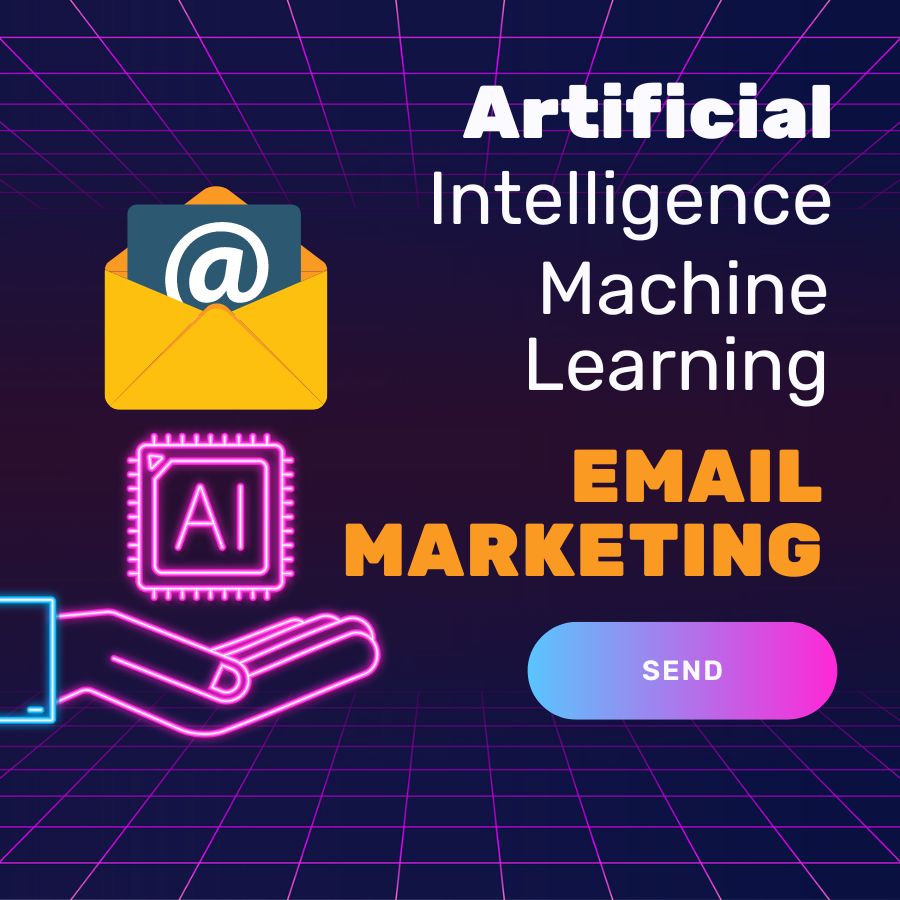Please sign in so that we can notify you about a reply
Machine learning (ML) plays a significant role in enhancing the effectiveness of email marketing by enabling more personalized, targeted, and data-driven campaigns. Here are some ways machine learning is used in email marketing, along with some tools that leverage ML:
Machine Learning Applications in Email Marketing:
-
Personalization:
- ML algorithms analyze user behavior and preferences to deliver personalized content, recommendations, and product suggestions in emails.
-
Predictive Analytics:
- ML models predict customer behaviors, such as likelihood to open an email, click on links, or make a purchase. This information helps marketers tailor their campaigns for better engagement.
-
Segmentation:
- ML algorithms automate the process of segmenting email lists based on various criteria, ensuring that messages are targeted and relevant to specific groups.
-
Dynamic Content Optimization:
- ML is used to optimize email content dynamically based on individual recipient preferences, resulting in more engaging and personalized messages.
-
Send Time Optimization:
- ML algorithms analyze historical data to determine the optimal times to send emails to different segments, improving open rates and overall engagement.
-
Churn Prediction:
- ML models can predict when subscribers are likely to churn (unsubscribe), allowing marketers to implement targeted retention strategies.
-
A/B Testing Optimization:
- ML helps optimize A/B testing by rapidly testing various elements and combinations, identifying the most effective content, subject lines, and designs.
-
Spam Detection:
- ML algorithms assist in identifying and preventing spam by analyzing patterns, content, and user behavior associated with spam emails.
Machine Learning Tools for Email Marketing:
-
Phrasee:
- Phrasee uses natural language generation and machine learning to optimize email subject lines for higher open rates. It helps marketers improve the effectiveness of their messaging.
-
Selligent Marketing Cloud:
- Selligent incorporates machine learning for predictive analytics, personalization, and automated segmentation to enhance the overall customer experience through email campaigns.
-
SendGrid (Twilio SendGrid):
- Twilio SendGrid leverages machine learning for email deliverability optimization, analyzing engagement data to enhance inbox placement.
-
Optimizely:
- While not specific to email marketing, Optimizely is used for A/B testing and experimentation, which can be applied to optimize various elements in email campaigns.
-
Salesforce Marketing Cloud:
- Salesforce Marketing Cloud employs Einstein, Salesforce's AI technology, to power predictive analytics, personalized recommendations, and automated content creation for email marketing.
-
Emarsys:
- Emarsys utilizes AI to provide personalized recommendations, predictive analytics, and automation for email marketing, helping businesses deliver more targeted and relevant content.
-
Boomtrain (Acquired by Zeta Global):
- Boomtrain focuses on predictive marketing and personalization, using machine learning to analyze user behavior and deliver personalized content through email campaigns.
When implementing machine learning in email marketing, it's essential to consider factors such as data privacy, transparency, and ethical use of customer data. Additionally, integration with other marketing technologies and systems is crucial for a seamless and effective workflow.
AI in Email Automation
Conversational AI can be a powerful addition to email sequences, enhancing engagement, personalization, and overall customer experience. Here are ways conversational AI can be incorporated into email sequences:
-
Personalized Email Responses:
- Implement conversational AI to analyze user responses and tailor subsequent emails based on individual interactions. This creates a more personalized and dynamic email sequence.
-
Interactive Email Campaigns:
- Use conversational AI elements, such as embedded surveys, quizzes, or interactive forms within emails. This encourages user participation and provides valuable data for further customization.
-
Chatbots in Email:
- Integrate chatbots into email sequences to provide immediate responses to user inquiries. Users can click on a button within the email to initiate a chat, leading to a more interactive experience.
-
Automated Follow-Ups:
- Set up conversational AI to automate follow-up emails based on user behavior or responses. For example, if a user clicks on a specific link, the AI can trigger a follow-up email with relevant content.
-
Dynamic Content Recommendations:
- Use conversational AI to analyze user preferences and behavior to dynamically recommend content within the email. This could include personalized product recommendations or tailored content suggestions.
-
Appointment Scheduling:
- Incorporate conversational AI to facilitate appointment scheduling directly within the email. Users can interact with the AI to choose a suitable time, reducing friction in the scheduling process.
-
Surveys and Feedback Collection:
- Use conversational AI to embed surveys or feedback forms within email sequences. This provides an easy way for users to share their opinions and helps in gathering valuable insights.
-
Natural Language Processing (NLP):
- Leverage NLP capabilities in conversational AI to understand and interpret user responses in a more human-like manner. This enables more sophisticated and context-aware interactions.
-
Lead Qualification and Segmentation:
- Implement conversational AI to qualify leads based on their responses and behaviors. This can automatically segment users into different categories for more targeted email communication.
-
Order Status and Customer Support:
- Use conversational AI to provide order status updates or offer customer support within email sequences. Users can inquire about their orders or seek assistance directly through the email.
-
Behavioral Triggers:
- Set up conversational AI to analyze user behavior, such as email opens, clicks, and website visits. Use these insights to trigger relevant email content or offers based on the user's actions.
-
Multi-Channel Integration:
- Integrate conversational AI across multiple channels, including email, chat, and social media. This ensures a consistent and seamless conversational experience for users.
When incorporating conversational AI into email sequences, it's crucial to strike a balance between automation and a human touch. Additionally, regularly analyze data and user feedback to refine and optimize the conversational elements for better performance and user satisfaction.
No reviews found
























